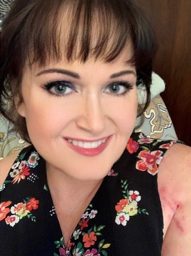
The length of a business plan varies and because creating one is for your own planning, include the information and level of detail that supports your focus and action steps. The following is an overview of a more traditional business plan that you can tweak to design your own.
1. Executive Summary – written last, this explains the history and trajectory of your business.
2. Company Description – include a description of who, what, how, where, when, and why.
a. Bio of each Coach that includes training and experience.
b. Mission, Vision, Code of Ethics, Core Values.
c. Goals and Objectives.
d. Business Philosophy.
3. Management and Organization – describe how you are structured and how you operate.
a. Legal form of Ownership.
(Sole Proprietor, Partnership, DBA, Business License, S Corp, LLC)
b. Insurance. (Liability, Professional, Other)
c. Management.
i. Oversight and Decision Making.
ii. Standard Operating Procedures.
d. Professional and Advisory Support.
(Accountant, Attorney, Mentor, Advisor, other)
4. Products.
a. Description and Pricing.
i. Books, White Papers, CD’s, MP3’s, or DVD’s.
ii. Training Programs.
b. Unique selling points – what makes your products unique.
5. Services.
a. Description and Pricing.
i. Individual Coaching – describe how, list packages and prices.
ii. Group or Team Coaching – describe, list prices.
iii. Consulting or speaking – describe what is offered, prices, and how it is separate from coaching.
b. Niche and unique selling point – what makes your services different and special.
6. Marketing Plan
a. Market Research – what is the interest in what you offer?
b. Target Market – be specific and include their interests.
c. Competition – who are your competitors and what do they offer?
d. Strategy – how will you reach your audience and make the sale?
7. Operating Plan
a. Location – describe office set-up and security.
b. Production and Inventory – what is your plan for developing products and how much will you keep on hand?
c. Service Scheduling – how and when will you schedule with clients?
d. Payment Policies and Processes – detail what forms of payment are used and also how and when clients pay.
8. Financial Plan
a. Financial Statements – budget, budget versus actual, profit and loss, income and expense.
b. Start-up Expenses – initial fees for licensing, website, etc.
c. Regular Expenses – include set monthly amounts, variable monthly amounts, and periodic expenses.
d. Capitalization – will you capitalize large furniture or electronic purchases?
e. Cashflow Projection – consider when income will be received and when expenses will be paid.
Which of the above you include is based on what serves your focus and planning. Similarly, the level of detail is also based on what will help you move forward. What is important is that you develop a plan for yourself that keeps you focused and moving forward.
For your coaching business, CCC has a number of You Tube videos, including Creating a Successful Coaching Business





